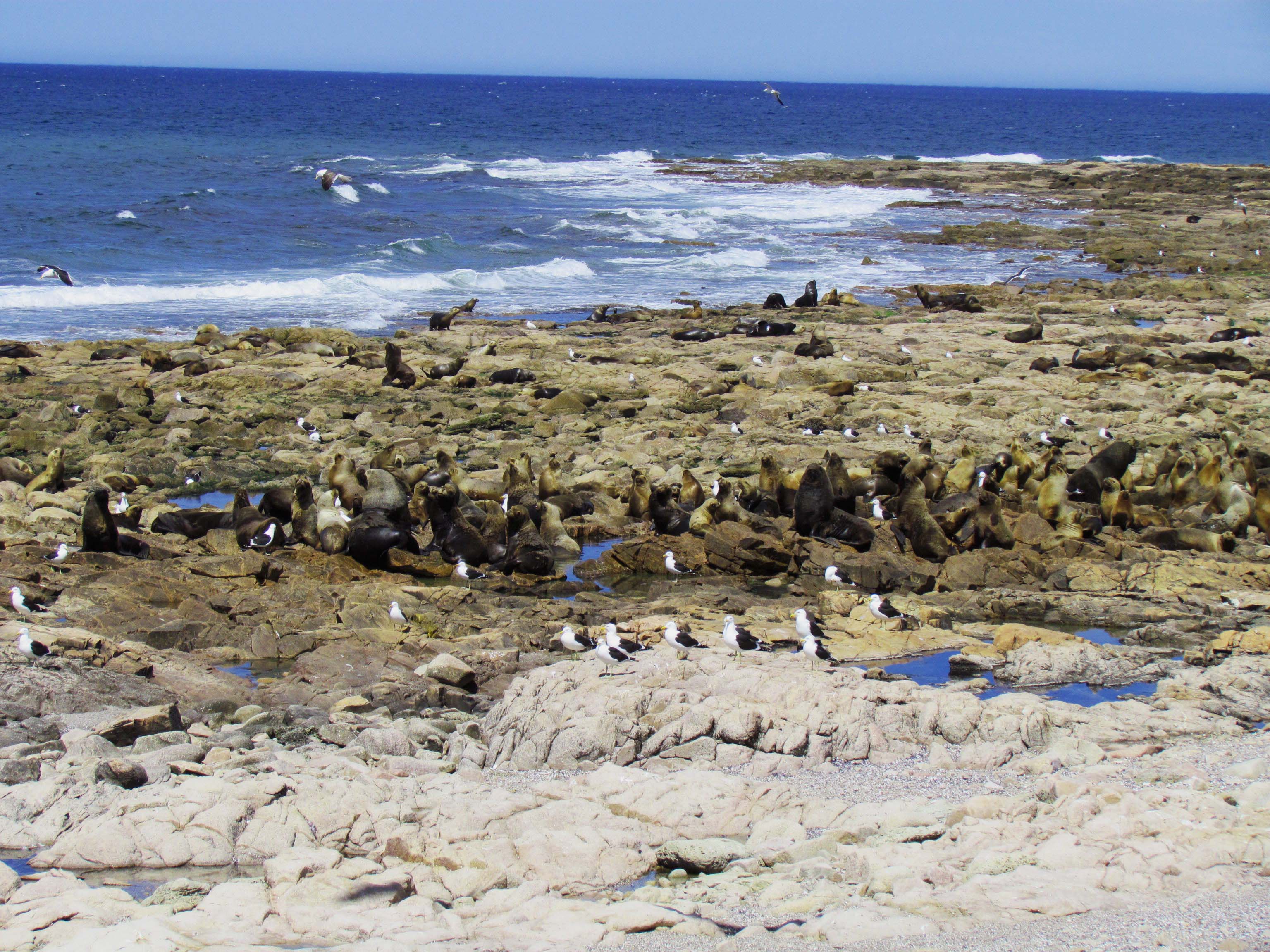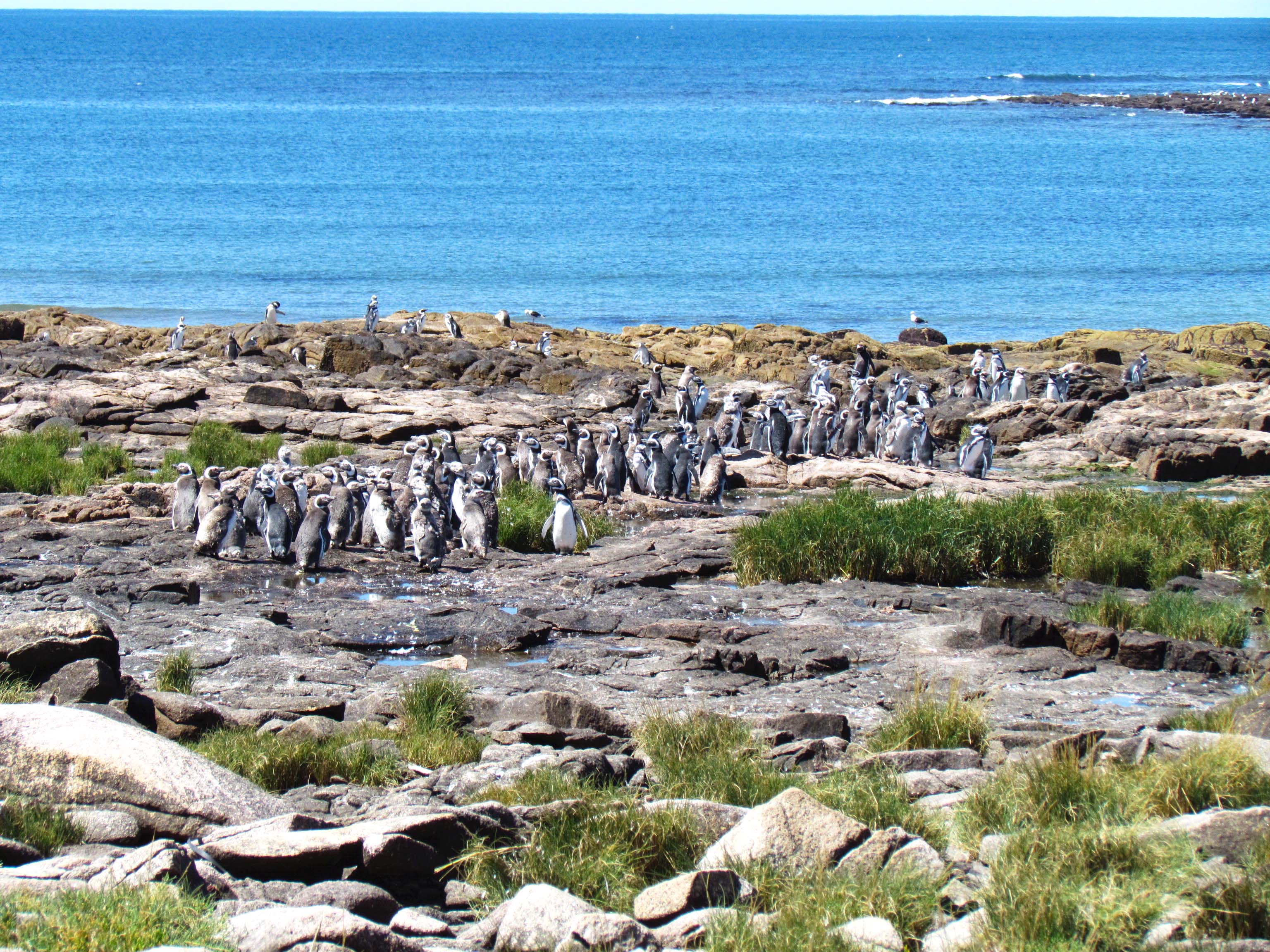 Photo: Islote Lobos
Photo: Islote Lobos
By Tomás Moggia
Translation by Brent Harlow
With the recent announcement of the establishment of Islote Lobos National Park, Argentina will arrive to the extraordinary number of 40 national parks. A provincial natural protected area since 1977, the Islote Lobos complex is comprised of five small islands with a great diversity of marine fauna and birds, many of which have transformed this coastal nook into a true wildlife refuge.
Once the exact boundaries of the new park have been drawn (based on the high tide line), it is expected that legislative steps will be taken to allow the park to begin operating under its new protected status by the beginning of next year. Islote Lobos would thus become the second national park in Río Negro province in addition to Nahuel Huapi National Park, founded in 1930 and a pioneering national park in Argentina.
Marked by the rythm of the high and low tides, Islote Lobos is the northernmost of the group. It is followed (moving from north to south) by La Pastosa, Ortiz Norte and Ortiz Sur, Redondo and the small island of los Pájaros. The site is located some 50 kilometers from Sierra Grande (a mining town on the Rio Negro) and is about the same distance from San Antonio Oeste.
“Preserving the natural environment and providing opportunities for tourism to develop are two concepts that go hand in hand," said governor Arabela Carreras during the announcement.
Infrequently visited and little known, this coastal complex—in spite of its small dimensions—contains reproductive colonies of different species of marine and coastal birds, and is an important place of rest for migratory birds—like red knots—during their long travels between the northern and southern hemispheres. Sixty-one species and 20 distinct families of birds have been recorded on the islands, among them various types of gulls, knots, plovers, oystercatchers, herons or ducks, and terrestrial birds such as falcons, rheas, owls and, every now and again, flamingos.
The water’s shallow depths and richness of nutrients partly explain why the zone is home to so many life forms, from crustaceans and mollusks to the northernmost Magellanic penguin colony in the world — with 12,000 individuals and 4,000 nests — and a reproductive colony of sea lions. The continental fauna also includes species like guanacos, foxes and even a furry variety of armadillo. This same abundance can be found in the sea, where there have been sightings of dolphin species like the threatened Fransiscana (or La Plata River) Dolphin, and the southern right whale.
 Photo: Islote Lobos
Photo: Islote LobosThe new Islote Lobos National Park will attempt to settle a claim related to the Atlantic Patagonian coastline’s under-representation and lack of protection within the National Parks Administration of Argentina. The re-categorization seeks to ensure that greater support and more resources will be available for the conservation of this fragile territory which, furthermore, has a valuable archeological record — even today one can find remnants in the form of ceramic, stone and shell artifacts left by the Tehuelche people. In a way, part of this tradition lives on through the nomadic fishing practices of the Pulperos — Patagonian octopus hunters —, who find in the Islote Lobos one of their last strongholds.
Increasing the protection of this strip of the Patagonian coastline will require striking a balance between tourism and conservation, and a fundamental task in this direction has been the demarcation of intangible zones so visitors do not disturb the native fauna and maintain the distance needed to avoid causing negative impacts. This is part of what will make it possible to maintain harmony and allow wildlife to prosper in the future national park.

